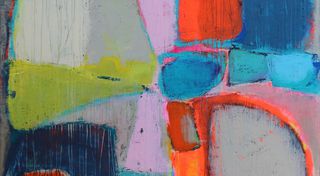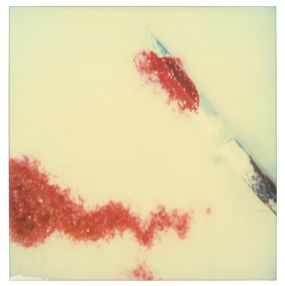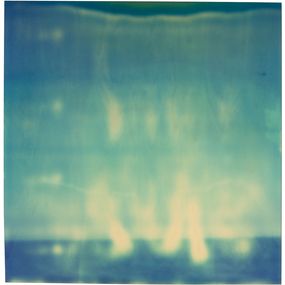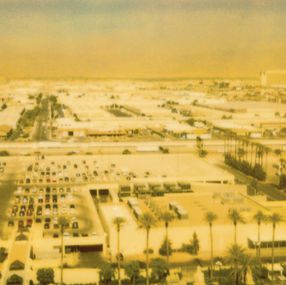
Village Motel, Raining (The Last Picture Show),
2006
Stefanie Schneider
Photography : C-print, Polaroid
126 x 166 x 0.1 cm 49.6 x 65.4 x 0 inch
Second NOT DISPLAYED BLUR TEXT
Free returns within 14 days
Authenticity guaranteed
Learn moreSecure payment
About the artwork
Type
Numbered and limited to 3 copies
1 copy available
Signature
Signed artwork
Authenticity
Sold with certificate of Authenticity from the artist
Invoice from the gallery
Medium
Dimensions cm • inch
126 x 166 x 0.1 cm 49.6 x 65.4 x 0 inch Height x Width x Depth
Framing
Silver wood aluminium mounted
Artwork dimensions including frame
126 x 166 x 2 cm 49.6 x 65.4 x 0.8 inch
Artwork sold in perfect condition
Artwork location: United States
Edition 1/3, 126x166cm
Analog C-Print, hand-printed and by the artist on Fuji Crystal Archive Paper, based on a Polaroid.
Artist inventory Number 545.
Mounted on Aluminum with matte UV-Protection.
Signed on verso.
Reality with the Tequila:
Stefanie Schneider’s Fertile Wasteland
by James Scarborough
“How much more than enough
for you for I for both of us darling?”
(E. E. Cummings)
Until he met her, his destiny was his own. Petty and inconsequential but still his own. He was cocksure and free, young and unaccountable, with dark hair and aquiline features. His expression was always pensive, a little troubled, but not of a maniacal sort. He was more bored than anything else. With a heart capable of violence.
Until she met him, she was pretty but unappreciated. Her soul had regis- tered no seismic activity. Dust bowl weary, she’d yet to see better days. A languorous body, a sweet face with eyes that could be kind if so inclined.
Until she met him, she had not been inclined.
It began when he met her. She was struck in an instant by his ennui. The sum of their meeting was greater than the imbroglios and chicaneries of their respective existences. He was struck by the blank slate look in her eyes. They walked, detached and focused on the immediate, obscenely unaware of pending change across a terrain of mountainous desert, their eyes downcast and world-weary, unable to account for the buoyant feeling in her heart. His hard-guy shtick went from potentiality to ruse. The gun was not a weapon but a prop, a way to pass time. Neither saw the dark clouds massing on the horizon.
They found themselves alone in the expanses of time, unaware of the calamity that percolated even as they posed like school kids for the pic- tures. Happiness brimmed in that wild terrain. Maybe things were begin- ning to look up.
That’s when the shooting started…
Stefanie Schneider assumes that our experience of lived reality (buying groceries, having a relationship with someone, driving a car) does not correspond to the actual nature of lived reality itself, that what we think of as reality is more like a margarita without the tequila.
Stefanie Schneider’s reality is reality with the tequila. She does not abol- ish concepts that orient us, cause and effect, time, plot, and story line, she just plays with them. She invites us to play with them, too. She offers us a hybrid reality, more amorphous than that with a conventional subject, verb, and predicate. Open-ended, this hybrid reality does not resolve itself. It frustrates anyone with pedestrian expectations but once we inebriate those expectations away, her work exhilarates us and even the hangover is good. An exploration of how she undermines our expectation of what we assume to be our lived reality, the reasons why she under- mines our expectations, and the end-result, as posited in this book, will show how she bursts open our apparatus of perception and acknowl- edges life’s fluidity, its density, its complexity. Its beauty.
She undermines expectations of our experience of reality with odd, other- worldly images and with startling and unexpected compressions and expansions of time and narrative sequence. The landscape seems familiar enough, scenes from the Old West: broad panoramic vistas with rolling hills dotted with trees and chaparral, dusty prairies with trees and shrubs and craggy rocks, close-up shots of trees. But they’re not familiar. These mis-en-scenes radiate an unsettling Picasso Blue Period glow or the intense celestial blue of the cafe skies that Van Gogh painted in the south of France. Yellow starbursts punctuate images as if seen through the viewfinder of a flying saucer. At the same time, objects appear both vintage and futuristic, the landscape of a post-apocalyptic world.
Landscapes change seemingly at random as do the seasons. Stefanie Schneider offers no indication of how time flows here, except that it con- ceivably turns in on itself and then goes its merry way. Time is a river whose source is a deep murky spring which blusters about with an occasional swirling eddy.
That Stefanie Schneider thwarts an easy reading is obvious but why does she do this? Since she will not countenance anything linear, logical, or sequential, and because she does not relish anything concrete and specific, she has to roil things up a bit. Nor does she seem comfortable with a book of images that is settled, discrete, and accountable. Instead she wants to create a panoply of anxious moments that refuse to settle down into any predetermined reading. She seeks to assemble the ele- ments, establish a provisional cosmology and then let each of us bring our own life experiences to bear on the enterprise. She unravels the paucity of a universe compromised by a matrix of either/or and replaces it with a kaleidoscopic neither/both cornucopia.
No fan of Descartes, she does not adhere to anything predicated on cogito ergo sum. No, the chance to present a universe of limitless iterations and utterances, open-ended, casualty-thwarting, intrigues her. She broaches a Heraclitan world: she shows that attempts to master, manage, and hoard time prove to be as elusive as a blind man trying to grab a salmon barehanded from a cold mountain stream. Even within the clear cut parameters of the Old West universe onto which she gloms, she shows that time is a bandit, that it is a mirage, that it is as unpredictable as it is indefinable and infinite. She coaxes us, scene by scene a slow- motion, out-ofsequence film clip, to agree with her that a running moat of lived reality easily overwhelms a castle of rationality.
Stefanie Schneider does not mount a demolition effort much less a de- construction one. Rather, she dismantles our expectations and sets about rebuilding not things but their connections anew. She is the mistress of the synapses. Indeed all these annoying ambiguities and irritating am- biances set the stage for a very particular certainty, one kernel of truth amidst these skewed and open-ended fields of inquiry. What connects all these images, in whatever order they might be presented1, is what I call an Augenblick, the mental distance between each page in whose ex- panse occurs the processing of shards of lived experience between these blinks of an eye that comprise the pages of Wastelands. During these innumerous Augenblicke, we take whatever shifts and turns that Stefanie Schneider throws at us, recalibrate our bearings, and then move on, at least until the next inevitable obstruction.
Irritating (and enlightening) as these shots may be, they’re nothing new. Rilke writes that, instead of trying to understand the quiddities of things, we should just be joyous at their mystery, just assume that they’re written in a lovely script that neither you nor anyone else can ever understand. Keats writes about being “awake forever in a sweet unrest,” although he’s talking about love. Stefanie Schneider makes us work for this idea of an Augenblick, but the result is worth it. The scenes and their sequencing dazzle us in a Borgesian Hall of Mirrors. Stefanie Schneider shows us that reality is anything but linear and user-friendly, but once one becomes accustomed to her enhanced dimension of space and time, we see the world in all its multifarious beauty and rapture. For that reason, Stefanie Schneider’s Augenblicke show us that reality may be a wasteland but it is as fertile as fertile can be.
About the seller
Professional art gallery • United States
Artsper seller since 2019
Vetted Seller
This seller rewards your purchases of multiple artworks
Imagine it at home
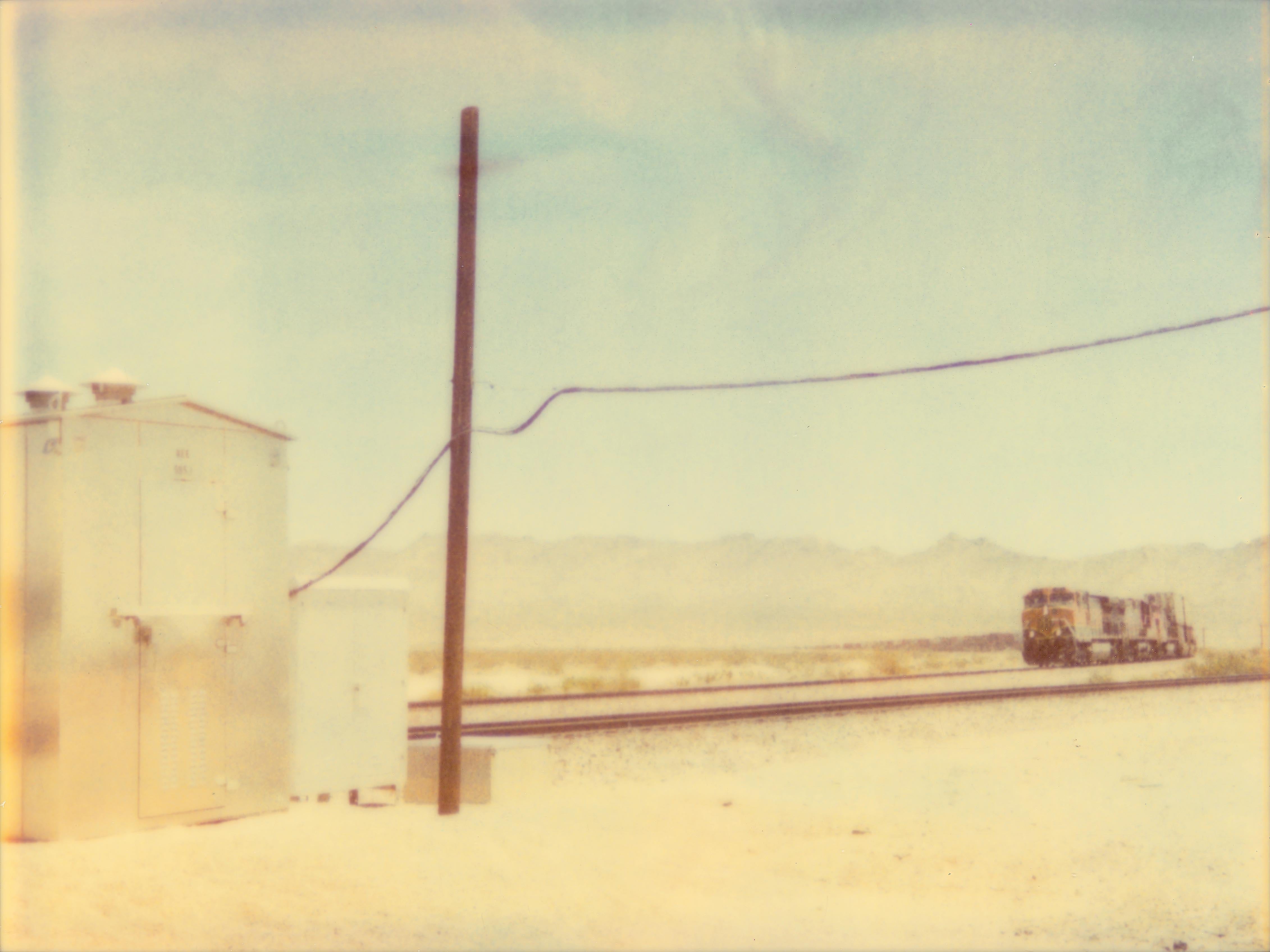
Discover more by the artist
Presentation
Stefanie Schneider (1968) is a German photographer living in Berlin and Los Angeles. Schneider's photographs exhibit the appearance of expired Polaroid instant film, with its chemical mutations. It has been released in books and exhibition catalogs, and in her own feature film 29 Palms, CA (2014). Her work has also been used as the cover art for music by Red Hot Chili Peppers and Cyndi Lauper, and in the film Stay (2005).
Schneider's preferred choice of location is the American West (especially Twentynine Palms, California, which served as location and title to one of her books), and the mounting of sequential images in a panel, the photographs evoke the impression of faded dreamy film stills. She holds an MFA in photography from the Folkwang Hochschule in Essen, Germany.
Schneider completed 29 Palms, CA in 2014. A feature film, art piece that explores the dreams and fantasies of a group of people who live in a trailer community in the Californian desert. The project includes six films: "Hitchhiker", "Rene's dream", "Sidewinder", "Till death do us part", "Heather's dream" and the feature film "The Girl Behind the White Picket Fence". A defining feature is the use of still Polaroid images in succession and voice over. Characters talk to themselves about their ambitions, memories, hopes and dreams. The latest of these short film is "Heather's dream", starring Heather Megan Christie and Udo Kier, and was selected in May 2013 by the International Short Film Festival Oberhausen and is also nominated for the 2013 German short film award.
In a review of her book Stranger Than Paradise, Daniel Kothenschulte writes in the German magazine Literaturen that:
Stefanie Schneider is an internationally known artist that takes analog photographs and makes experimental movies with them. Schneider has cribed some of the titles of the series of her enlarged Polaroids from her favorite movies: Red Desert, Zabriskie Point or The Last Picture Show. Even if most images remain connected to the genre of road movies—in one case one seems to get a glimpse of Ridley Scott's tragic runaways Thelma and Louise.
Collections
DZ Bank, Francfort, Allemagne
Dreyfuss, Bâle, Suisse
Schmidt Bank, Ratisbonne, Allemagne
Groupe d'édition Holtzbrinck, Stuttgart, Allemagne
Collection Sander, Berlin, Allemagne
Ocean Foundation, Zurich, Suisse
Germanisches Nationalmuseum, Nuremberg, Allemagne
Impossible Collection, Vienne, Autriche
Collection Luc LaRochelle, Montréal, Canada
Collection d'art du canton de Zug, Suisse
Expositions
Expositions individuelles
2014 Motion Photography – 6 Finalists, Saatchi Gallery, Londres, GB
2014 Instantdreams, De Re Gallery, Los Angeles, USA
2014 Stefanie Schneider, c.art-Galerie Bregenz, Autriche
2013 The girl behind the white picket fence, Galerie Catherine et André Hug, Paris, France
2012 Stranger than Paradise, Christian Hohmann Fine Art, Palm Desert, USA
2012 Stefanie Schneider, Gallery at Cliff Lede Vineyards, Napa Valley, USA
2011 California Dreaming, ROLLO Contemporary, Londres, GB
2010 Stefanie Schneider, Galerie Walter Keller, Zurich, Suisse
2010 Instant Dreams, Frank Picture Gallery, Santa Monica, USA
2009 29 Palms, CA, Moravian Gallery, Brno, République tchèque
2008 Sidewinder, Städtische Galerie am Mozartplatz, Salzbourg, Autriche
2007 Wastelands, Kunstverein Recklinghausen, Allemagne
2006 Wastelands, Zephyr / Reiss-Engelhorn-Museen, Mannheim, Allemagne
2005 Last Picture Show, Galerie Caprice Horn, Berlin, Allemagne
2004 Suburbia, Galerie Kuttner Siebert, Berlin, Allemagne
2004 Stefanie Schneider, Galerie Michael Sturm, Stuttgart, Allemagne
Expositions collectives
2014 Nude, Pop-up Art Gallery Berlin, Allemagne
2013 Images for Images, GASK – Gallery of the Central Bohemian Region, Kutná Hora, République tchèque
2013 The Polaroid Years: Instant Photography and Experimentation, Frances Lehman Loeb Art Center, Poughkeepsie, USA
2013 Road Atlas - Straßenfotografie, DZ Bank Collection, Kunsthalle Erfurt, Allemagne
2012 Polaroid (Im)Possible – The Westlicht Collection, Forum de la culture et de l'économie du land de Rhénanie du Nord-Westphalie, Düsseldorf, Allemagne
2010 Mapping Worlds: Welten verstehen – Aufbruch in die Gegenwart, 8ème triennale internationale de la photo, Esslingen, Allemagne
2009 True Lies, Kunsthaus Essen, Allemagne
2008 Les Rencontres d'Arles, organisées par Christian Lacroix, nominée pour le prix découverte
2007 Breaking the Waves, Arthaus, Los Angeles, USA
2006 Artists for Tichy - Tichy for Artists, Museum für Moderne Kunst, Passau, Allemagne
2006 Out of the Camera: Analoge Fotografie im digitalen Zeitalter, Kunstverein, Bielefeld, Allemagne
Land in Translation, Riverside Museum, USA.
Artsper delivers internationally. The list of countries is available in the first step of your cart.
If your country is not listed contact us at [email protected] and we will see what we can do.
Note that Customs fees may apply for works shipped internationally. This is indicated in the first step of the shopping cart.
You can choose a delivery address different from the billing address. Make sure that a trusted person is present to receive the work if you cannot be there.
Have you purchased a painting, sculpture or work on paper?
Find our expert advice for the conservation and promotion of your works in the articles below:
Artsper offers you access to more than 200,000 works of contemporary art from 2,000 partner galleries. Our team of experts carefully selects galleries to guarantee the quality and originality of the works.
You benefit from:
-
Works at gallery price
-
Return within 14 days, regardless of your location
-
Easy resale of the work purchased on Artsper
-
Personalized research tools (selection and tailor-made universe)
Our customer service is available for any assistance.
At Artsper, our mission is to allow you to collect works of art with complete peace of mind. Discover the protections we offer at every stage of your shopping experience.
Buy works from top galleries
We work in close collaboration with carefully selected art galleries. Each seller on Artsper is carefully examined and approved by our team, thus ensuring compliance with our code of ethics. You therefore have the assurance of purchasing authentic, high-quality works.
Total transparency: you know what you are buying
Before being posted online, all artwork on Artsper is reviewed and validated by our moderation team. You can browse with complete peace of mind, knowing that each piece meets our criteria of excellence.
Personalized support: our experts at your service
Our team of contemporary art experts is available by phone or email to answer all your questions. Whether you want advice on a work or a tailor-made selection to enrich your collection, we are here to support you.
Resell your works with ease
If you have purchased a work on Artsper and wish to resell it, we offer you a dedicated platform to relist it. To find out more, click here.
Make offers with Artsper: negotiate like in a gallery
You have the possibility to propose a price for certain works, just like in a gallery. This feature allows you to initiate discussions and potentially acquire your coins at advantageous prices.
Get help with your negotiations
Our team will negotiate for you and inform you as soon as the best offer is obtained. Do not hesitate to call on our expertise to ensure a transaction at the best price.
Order securely
Artsper satisfaction assurance
We want you to be completely satisfied with your purchase. If the work you receive is not to your liking, you have 14 days to return it free of charge, and you will be refunded in full, whatever the reason.
Secure payment with Artsper partners
All credit card payments are processed by Paybox, the world leader in payment solutions. Thanks to their strict security standards, you can transact with confidence.
Problem Support
In the rare event that an artwork arrives damaged or not as described, we are here to help. Whether for a return, refund, restoration or exchange, our team will support you throughout the process and will ensure that we find the solution best suited to your situation.
Conditions to benefit from Artsper protections:
-
Use one of the payment methods available on Artsper for your order.
-
Report any problems within one week of receiving the work.
-
Provide required photographic evidence (including original artwork and packaging).
Artsper guarantees cover the following cases:
-
The received work lacks a described characteristic (for example, a signature or frame).
-
The artwork has significant differences from its description (e.g. color variation).
-
The work is damaged upon receipt.
-
The work is lost or damaged by the carrier.
-
Delivery is significantly delayed.
With Artsper, you collect with complete peace of mind.
